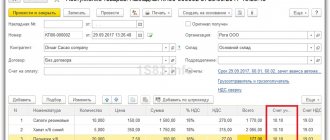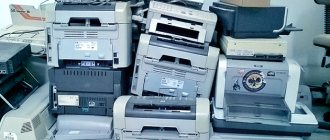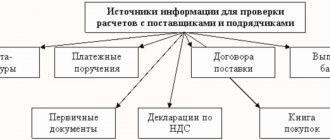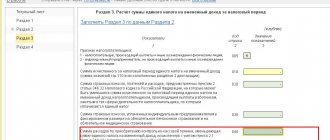Personal protective equipment (PPE) is used, as a rule, in manufacturing enterprises and for work requiring specific devices, although the law does not prohibit their use in any other organizations. Let's try to understand some accounting issues:
- Should expenses always be accepted in tax accounting? What conditions must be met for this?
- How to register purchased funds in the accounting department?
- Should the cost of workwear be withheld from an employee upon dismissal?
- Is personal protection required for office workers?
What should you consider when concluding a contract for the purchase of workwear?
- The employer is obliged to purchase and issue workwear that has passed certification or declaration of conformity.
- Until December 31, 2013, workwear was purchased and issued based on the results of certification of workplaces for working conditions. From January 1, 2014, instead of certifying workplaces based on working conditions, a special assessment of working conditions is carried out. Therefore, if the organization additionally creates new jobs, which, according to the results of the special safety assessment, contain harmful or dangerous factors, and the necessary protective clothing is not available, a contract for its supply should be concluded again.
- Working clothes are purchased at the expense of the employer. This means that purchasing such clothing at the expense of employees is unacceptable. In practice, similar situations often arise.
- The protective clothing issued to employees must correspond to their gender, height and size, the nature and conditions of the work performed. Thus, the law obliges the employer to provide workwear of the required size. Therefore, when concluding an agreement with a supplier, you should indicate the entire size range in the application. When delivering materials, monitor its implementation.
Standard
Of course, it won’t be possible to issue protective clothing and other protective equipment left and right; there are standards. They are determined by several basic documents (model standards) approved:
- Resolution of the Ministry of Labor No. 70 of 13/31/97 (on warm clothing).
- Order of the Ministry of Labor No. 997n dated 12/09/14 (general).
- Order of the Ministry of Health and Social Development No. 297 of April 20, 2006 (signal clothing).
Individual industries also have their own legislation, so first of all you need to check if there are any for your type of activity, and then turn to the general ones. It is allowed to establish your own standards, of course, only if this improves the situation of workers and increases security.
If you open Order No. 997, you will see that the quantity of PPE and protective clothing for an annual period is indicated, but sometimes this is not a specific number, but a mysterious phrase “before wear.” What does it mean: we write off such a product at any time when it becomes unusable? Yes and no. To begin with, you still have to pay attention to the instructions supplied with the product; it should indicate the service life, and you should focus on it (install it in the LNA).
Of course, if, for example, work boots are damaged earlier, they will also need to be replaced. An employee has the right to refuse to start work if he is not provided with protective equipment (and therefore safety precautions are not followed), and the downtime will have to be paid at full rate.
By the way! PPE must be certified and have an appropriate declaration, otherwise their use at the enterprise is unacceptable.
To write off unusable protective equipment, an act is drawn up and signed by a special commission. In some cases, it will be necessary to determine the level of wear and tear ahead of schedule, for example, if an employee quits, but did not bother to hand over the workwear (and other things) and kept it for himself. In this case, we make calculations based on the duration of use.
Example: Monter Sidorov was given a special suit - overalls and jacket - with a wear period of 1 year. The employee quit after 4 months without returning the clothes. It is necessary to calculate the degree of wear of the suit. We take a period of 12 months as 100%, then 4 months is 33.33%. It turns out that the wear rate is a little more than thirty-three percent.
Note! If an employer transfers work clothes to a dismissed employee, then this is income in kind, on which personal income tax must be withheld. If this is not possible, you need to send the appropriate certificate of Form 2-NDFL to the Federal Tax Service.
Some products require a special periodic procedure - verification. As a result, special tests are carried out (for example, this applies to dielectric gloves), and suitability for further use is established.
What sources of financing can be used to purchase workwear?
This question most often interests accountants of budgetary institutions.
This type of expenditure can be financed both from budget subsidies allocated for the implementation of state (municipal) tasks, and from funds received from the provision of paid services. In addition, a budgetary institution has the right to purchase special clothing using insurance contributions for compulsory social insurance against industrial accidents and occupational diseases. The basis for the acquisition is the results of the SOUT.
The amount of funds allocated by the policyholder to finance preventive measures cannot exceed 20% of the amount of insurance premiums accrued for the previous calendar year, minus the costs of paying security for the specified type of insurance, made by the policyholder in the previous calendar year.
Let us note that in order to make expenses from insurance premiums for injuries, a budgetary organization must submit an application to the executive body of the Social Insurance Fund at the place of its registration before August 1 of the current calendar year.
Disposal of PPE
Decommissioned PPE must be stored in a warehouse for no more than 11 months, since after decommissioning, Federal Law No. 89 “On Production and Consumption Waste” comes into force, as a result of which the protective clothing turns into hazard class III waste.
Moreover, depending on the degree of contamination of workwear and the composition of the fabric, the hazard class can change upward, for example, contamination with petroleum products by 15% or more.
Storage in this case is already considered the collection and accumulation of waste, and such activity refers to a licensed type; if there is none, administrative measures will be applied.
Disposal proceeds as follows: all the protective clothing is collected for disposal, a company engaged in the relevant type of activity is called (they have a license for transportation and disposal), they come, take away the PPE and give a certificate, which then needs to be attached to the reports to Rosprirodnadzor and shown as delivery to scrap
This must be taken seriously, since punishment in the field of environmental protection greatly impacts the employer’s budget and is assessed under Part 4 of the Code of Administrative Offenses, Art. 8.2:
- for citizens – from 3,000 to 5,000 rubles;
- for officials - from 20,000 to 40,000 rubles;
- for individual entrepreneurs – from 40,000 to 50,000 rubles or suspension of activities for up to 90 days;
- for a legal entity – from 300,000 to 400,000 rubles or suspension of activities for up to 90 days.
If a repeated violation is detected within a year, Part 5 of the Code of Administrative Offenses, Art. 8.2:
- for citizens – from 5,000 to 6,000 rubles;
- for officials - from 40,000 to 50,000 rubles;
- for individual entrepreneurs – from 50,000 to 60,000 rubles or suspension of activities for up to 90 days;
- for a legal entity – from 500,000 to 600,000 rubles or suspension of activities for up to 90 days.
Therefore, I recommend recycling preferably 2 times a year in order to protect the employer from fines from Rosprirodnadzor.
How to account for workwear costs
Workwear owned by the organization is accounted for in the accounts/sub-accounts for materials accounting before being put into operation. Like other materials, it is taken into account at the cost of actual acquisition costs. The procedure for accounting for workwear is fixed as an element of the company’s accounting policy. The purchased workwear arrives at the warehouse on the basis of a receipt order.
There is another way. As can be seen from paragraph 9 of the Guidelines, an organization can keep records of special tools, fixtures, and equipment in the manner prescribed for accounting for fixed assets. This method has a number of disadvantages. Firstly, the cost of workwear will have to be subject to property tax. Secondly, it is necessary to monitor the condition of the workwear so that it can be written off on time.
Registration of SF supplier
VAT is accepted for deduction if the conditions are met (clause 2 of Article 171 of the Tax Code of the Russian Federation):
- special clothing was purchased for employees involved in activities subject to VAT;
- a correctly executed SF (UPD) is available;
- special clothing has been accepted for registration (clause 1 of article 172 of the Tax Code of the Russian Federation).
To register an incoming invoice, indicate its number and date at the bottom of the Receipt document form (acts, invoices, UPD) and click the Register button.
The Invoice document received is automatically filled in with the data from the Receipt document (act, invoice, UPD) :
- Operation type code - “Receipt of goods, works, services” .
If the document has the Reflect VAT deduction in the purchase book by date of receipt checkbox , then when it is posted, entries will be made to accept VAT for deduction.
Postings according to the document
The document generates the posting:
- Dt 68.02 Kt 19.03 - VAT accepted for deduction.
Purchase Book report can be generated from the Reports - Purchase Book section. PDF
Issuance of protective clothing to employees
When transferring workwear from a warehouse to other divisions of the company, it is necessary to draw up a primary document on the basis of which the workwear is kept accountable. Such paper will be enough to write off the cost of workwear as an expense both in accounting and tax accounting.
If you choose a unified primary, you can use one of these forms:
- demand-invoice;
- invoice for materials release.
If you decide to develop your own form, then you can take the invoice for the release of materials as a basis, removing unnecessary things from it.
The employee responsible for receiving workwear issues it to employees. His actions also need to be recorded somewhere. It is advisable to create a special statement for each person in all departments for a year or month, so as not to fill it out every time you issue special clothing.
Records can also be kept on a special card, which is filled out for each employee of the organization who has received special clothing.
The procedure for writing off workwear that has become unusable ahead of schedule
Example (continued)
In May, Design Repair LLC put into operation 1 protective suit, 1 headgear, 12 pairs of gloves and 1 safety glasses.
The write-off method for workwear is defined as a monthly linear write-off, with the exception of gloves - they are written off in full at one time.
After the workwear began to be used, the following events occurred:
| Period | Events | Amount of depreciation written off before damage to workwear | Amount to be written off after damage to workwear | Write-off of the remaining cost of workwear in accounting |
| September | The suit was damaged beyond repair through no fault of the employee | 430 rub. = 1,290 / 12 months × 4 months (June - September) | 860 rub. = 1,290 – 430 | Financial results |
| October | Lost hat due to employee fault | 133 rub. = 320 / 12 months × 5 months (July - October) | 187 rub. = 320 – 133 | For settlements with the employee for compensation of damages |
| November | 12 pairs of gloves were irreparably damaged through no fault of the employee | RUB 1,560 = 130 × 12 pairs | 0 rub. | Not carried out, because the cost of gloves was written off in full in May as part of production costs |
| December | The suit, put into operation in September, was sold due to the end of apartment renovation activities | RUB 322.50 = 1,290 / 12 months. × 3 months (October December) | RUB 967.50 = 1,290 – 322.50 | For other expenses |
The procedure for writing off inventories in accordance with the requirements of the new FSBU 5/2019 is described in detail in the Ready-made solution from ConsultantPlus. If you do not already have access to this legal system, trial access is available for free.
How to retain the cost of workwear from a resigning employee?
When you issue workwear to an employee, you must conclude an agreement with him on the transfer of soft equipment for use or a one-time document on acceptance and transfer.
The employee’s obligation to compensate for direct actual damage caused to the employer is provided for in Article 238 of the Labor Code of the Russian Federation, therefore termination of the employment contract does not entail the release of the employee from financial liability for non-return of workwear.
Thus, in the case of correct registration of the issue of special clothing if it is not returned by an employee leaving the organization, the employer has the right to demand reimbursement of the cost of the special clothing (the useful life of which has not expired) taking into account the degree of wear and tear (Article 246 of the Labor Code of the Russian Federation).
The programs “Kontur-Accounting Asset” and “Kontur-Accounting Budget” allow you to avoid errors when keeping records of workwear or uniforms.
Yulia Volkhina , project manager
Automation of accounting for special clothing and personal protective equipment using the Occupational Safety and Health program
Let's take a closer look at the work of the Occupational Safety and Health program. To get started, you need to fill out the main directories: “Organizations”, “Divisions”, “Professions”, “Individuals”.
The program has a block for exchanging data with standard configurations on the 1C:Enterprise platform: “Manufacturing Enterprise Management”, “Salaries and Personnel Management”, “Enterprise Accounting”.
To fill in, and most importantly to update, data, you can use data loading processing. The program is already configured and to start the exchange you just need to specify the required database as the source. After the exchange, all necessary reference books will be completed.
Now we can set the sizes of individuals in two ways:
- Enter the size data into the personal card of the individual.
- Use the special processing “Setting the sizes of individuals”. This option is more convenient when filling out dimensions initially, when you need to fill out data for all individuals.
It is also possible to maintain the sizes of the clothing range using the “Occupational Safety and Health” program. Nomenclature in accounting or warehouse accounting systems may not be maintained with a sufficient degree of detail in size. It's not needed there. And to provide for workers, a labor protection specialist is required. For this purpose, the program provides accounting in terms of characteristics.
When transferred to the Occupational Safety and Health program, the data obtained from accounting systems must be specified in size.






